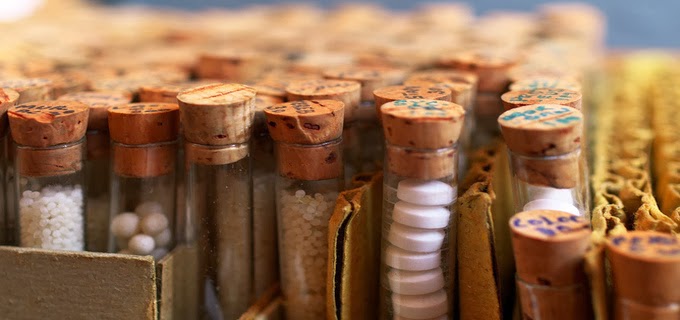Croton Tiglium is a very well known purgative. Its patient
develops sudden diarrhoea associated with griping and a continuous urge to pass
stools. As a result, the patient becomes very weak. The skin symptoms of Croton
resemble those of Rhus Tox. Blisters full of secretions form over the skin
along with an itching and burning sensation. One noticeable difference between
Croton and Rhus Tox is that in Rhus Tox when the eczema gets better, the
healthy skin appears underneath. Next time, the blisters do not form at the same place.
Afterwards, if the eczema returns, the previously affected part may become
eczematous as well. In Croton, the blisters will form over the previously
healed healthy areas leading to the development of an obstinate type of eczema.
Rhus Tox and Croton affect the intestines similarly.
Croton is very useful in the treatment of chronic
dysentery and diarrhoea. Unlike Rhus Tox and other anti-diarrhoeal
remedies, the diarrhoea in a patient of Croton is sudden and propulsive. When
children develop diarrhoea soon after taking milk, Croton would be the most
probable remedy. The nausea in
Croton is like that of Ipecacuanha. In Ipecacuanah, however, there is only
nausea but no vomiting. In the case of Croton, there is nausea and diarrhoea
but no vomiting. In Croton, the stomach distends with wind and
there is rumbling noise in the intestines. It feels as if the intestines are
full of fluid. The stomach feels empty and hungry. In Croton, the skin and the abdominal
symptoms alternate with each other.
A variety of eye symptoms are also found in Croton. The eyes become
red and sore. Pimples and blisters form over the swollen eyelids. These symptoms are also noticed in other
homoeopathic remedies but when there is inflammation of the intestines
(Enteritis), the most likely remedy is Croton. In Croton, the eyes sink
back due to dehydration. In Paris Quadrifolia this very symptom may be
related to a wider range of ailments, so much so that the women can
feel as if threads are being pulled out of their breasts causing severe
pain, which makes sleeping difficult at night. Croton and Paris differ
with each other. In the former, there is diarrhoea while in the
latter there is no diarrhoea. In Croton, there is a feeling of pull with a rope
under the umbilicus. This kind of sensation is also noticed in Plumbum. Regarding eczema
in children, especially the kind involving the scalp, Croton and
Sepia work very much alike. But the typical symptoms of Croton would
differentiate the picture from that of Sepia.
There is a variety of homoeopathic remedies related to the eczema over the genital organs.
Croton is on the top of the list. Rhus Tox, Anagallis and Graphites are also
famous in the treatment of this kind of eczema. The blisters in Croton are
smaller than those of Rhus Tox. Similarly
the fluid content of the blisters is also less in Croton. Croton and Rhus Tox
work as antidote to each other. In Rhus Tox there is no diarrhoea.
The panacea for the treatment of the severe kind of
diarrhoea resulting from Croton is Podophyllum. In Podophyllum too, the stools squirt out
forcefully. The itching associated with Croton is best treated with Rhus Tox. Anagallis is well renowned for the treatment of itching of the palms. The itching
and eczema of Rhus Tox is usually on the back of the hand. Anagallis is the treatment
for a similar condition of the palms of the hands. Burning is milder in the
case of Anagallis compared to Rhus Tox. The reappearance of the eczema of
Anagallis over the previously affected area resembles the similar tendency in
Croton. The ailments of Croton get
worse in hot weather. The patient is restless, confused and sallow. There is a
feeling of severe pressure and pain on the forehead. There is a feeling of heaviness in the head and vertigo.
The cough may also provoke an attack of Asthma. The patient starts coughing as soon as he
puts his head on the pillow. The patient cannot lie down and finds it
impossible to take a deep breath. Croton
should not be forgotten in treating discharging
ears with severe itching. A feeling of burning in the food pipe
(oesophagus) is also a specific sign of Croton. The stomach feels weak.
In Croton, the urine is frothy and of orange colour at night. When
settled, sticky particles rise to the surface. During the
daytime, the urine is yellowish in colour and contains white particles. In Croton, the symptoms aggravate on eating, touching the
affected area and at night.





